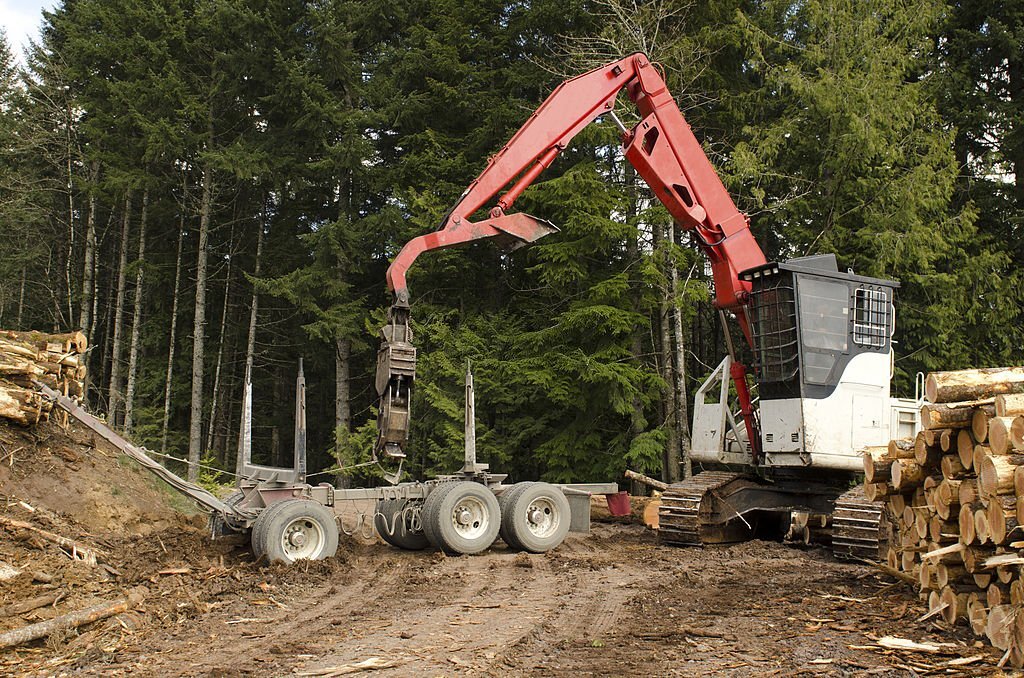
Introduction
The logging industry plays a critical role in meeting global demands for timber and wood products. However, responsible logging practices are essential to ensure the sustainable management of forests and the preservation of natural ecosystems. Environmental factors significantly influence the selection of logging equipment, as they impact operational efficiency, safety, and overall environmental sustainability. In this article, we will explore how climate, terrain, biodiversity, and regulatory considerations affect the choice of logging machinery. Understanding these factors allows logging companies to strike a balance between efficiency and environmental responsibility in their operations.
Climate
1.1 Cold Weather Conditions
In regions with cold climates and freezing temperatures, logging equipment must withstand challenging conditions. Extreme cold can cause mechanical failures, reduced battery performance, and hydraulic system inefficiencies in conventional logging machinery.
To address these challenges, logging companies may opt for specialized cold-weather equipment featuring enhanced insulation, cold-starting capabilities, and hydraulic fluids formulated for low temperatures. These modifications ensure that logging operations can continue efficiently even during the harshest winter months.
1.2 Hot and Humid Environments
In hot and humid environments, equipment can experience increased wear and tear due to heat stress and accelerated corrosion. Overheating engines and hydraulic systems can lead to reduced performance and potential breakdowns.
To mitigate the impact of hot and humid climates, logging equipment may be equipped with efficient cooling systems, heat-resistant materials, and corrosion-resistant coatings. Regular maintenance and monitoring are also essential to ensure the equipment’s longevity and optimal performance.
Terrain
2.1 Rugged and Steep Terrain
Logging operations in rugged and steep terrains pose challenges for equipment maneuverability and safety. Traditional logging machinery may struggle to navigate uneven surfaces and steep slopes, leading to higher risks of accidents and equipment damage.
To overcome these obstacles, specialized logging equipment, such as tracked or articulated machines, is preferred in rugged terrains. These machines offer enhanced traction, stability, and maneuverability, reducing the likelihood of accidents and minimizing environmental impact.
2.2 Wetlands and Sensitive Ecosystems
Logging in wetlands and other sensitive ecosystems requires careful consideration to minimize environmental impact. Conventional wheeled machinery can cause soil compaction and damage fragile vegetation in these areas.
To protect wetlands and sensitive ecosystems, logging companies may opt for low-ground pressure equipment, such as tracked or rubber-tired machines with large flotation tires. Implementing best practices, such as avoiding heavy machinery traffic in sensitive areas, further reduces the ecological impact.
Biodiversity
3.1 Protecting Biodiversity Hotspots
Logging in biodiversity hotspots, where there is a high concentration of rare and endangered species, demands special attention to environmental preservation. Clear-cutting and intensive logging practices in these areas can lead to the loss of crucial habitats and species.
To safeguard biodiversity hotspots, selective logging techniques and reduced-impact logging methods are implemented. These practices prioritize the preservation of key habitats and minimize the disruption to wildlife, contributing to the overall health of the ecosystem.
3.2 Conserving Old-Growth Forests
Old-growth forests house unique and diverse ecosystems that have evolved over centuries. Logging in these areas can lead to irreversible ecological damage.
To protect old-growth forests, logging companies may opt for sustainable harvesting practices, limiting the extent of logging in these areas and focusing on regeneration and conservation efforts.
Regulatory Considerations
4.1 Environmental Regulations
Environmental regulations play a crucial role in shaping the selection of logging equipment. Governments and environmental agencies set standards to protect natural resources, air quality, water quality, and wildlife.
Compliance with environmental regulations often involves investing in environmentally friendly equipment, implementing erosion control measures, and obtaining necessary permits for logging activities.
4.2 Certification Programs
Certification programs, such as the Forest Stewardship Council (FSC) certification, evaluate logging practices based on social, economic, and environmental criteria. Companies seeking FSC certification must meet stringent standards for responsible forest management and sustainable logging.
Selecting logging equipment that aligns with certification requirements is essential for companies aiming to demonstrate their commitment to environmental responsibility and sustainability.
Conclusion
The selection of logging equipment is a complex process influenced by various environmental factors. Climate conditions, terrain ruggedness, biodiversity concerns, and regulatory considerations all play a significant role in shaping the choices made by logging companies. Striking a balance between operational efficiency and responsible environmental practices is essential for the sustainable management of forests. By understanding and addressing these environmental factors, the logging industry can contribute to the preservation of natural ecosystems and ensure the responsible use of forest resources for generations to come.



